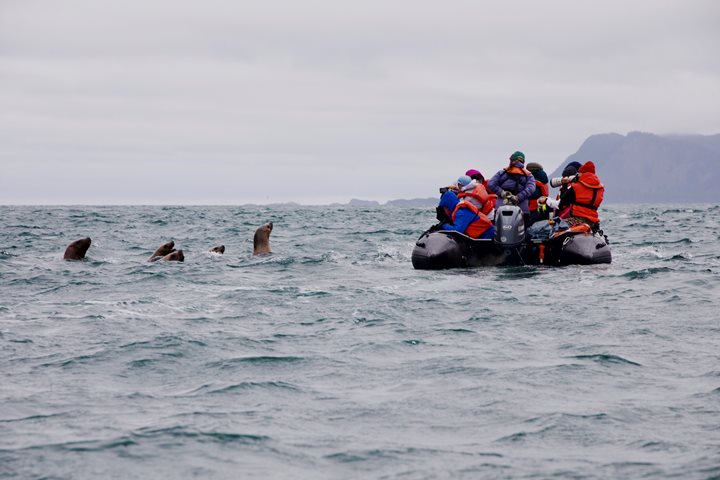From the break of day, guests on National Geographic Sea Bird were treated to unbelievable wildlife sightings. As the sun struggled to climb into view, a lone elephant seal logged at the water’s surface. An uncommon sight in this region and a good omen. Such predictions proved accurate as a black bear was spotted along the rocky coastline shortly thereafter. We watched as the bear foraged along the intertidal. Eventually we bid the creature adieu only to be greeted with a parade of Dall’s porpoises, sea otters, and Steller sea lions.
The morning progressed with similar luck following this encounter. At roughly 0945, myself and fellow naturalists Linda Burback and Jim Coyer spotted two large rorqual whales spouting in against the verdant backdrop of the spruce-laden mountains. There was fierce deliberation as to whether these animals were sei or fin whales, but expedition leader Alberto Montaudon captured the mood on the bow adequately when he lamented, “This is what good naturalists do. We examine the evidence, we consult our friends, and we go from there.” As of now the consensus seems to point toward a pair of fin whales, but as the evidence is examined this may change once more.
The baleen whale forays continued as we pressed on. Shortly following lunch, we encountered multiple pairs of humpback whales. One of these pairs featured a particularly rambunctious calf that surfaced at six-minute intervals – each time with renewed vigor and zest. The animal breached, tail-lobbed, and rolled for what seemed like an eternity as Captain Paul St. Germain masterfully maneuvered the vessel.
As the sun descended, we have begun to cross open water toward the islands of Haida Gwaai. Everyone on board gathered in the lounge for cocktails, company, and conversation. The excitement on board was palpable. Cultural specialist Barbara Wilson had been inundated with questions as our arrival to Sgaang Gwaai grew closer. Having been to this magical place before, I know I will sleep well–dreaming of totems and evergreens.







